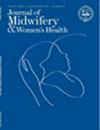Provider-Led Interventions to Reduce Congenital Cytomegalovirus
Abstract
Introduction
Cytomegalovirus (CMV) infection immediately before or during pregnancy can infect a fetus transplacentally, causing congenital CMV (cCMV). cCMV can cause miscarriage, stillbirth, growth restriction, neurodevelopmental delay, hearing, and vision impairment. This integrative review examined original research to better inform health care providers on methods for reducing cCMV infections.
Methods
Database searching to identify original research pertaining to cCMV prevention in CINAHL, PubMed, and Nursing and Allied Health in January 2024 produced an initial 417 initial studies. Final extraction included 34 studies that met inclusion criteria for analysis.
Results
Three relevant themes emerged: education, screening, and treatment. Messaging and education focused on risk reduction as most effective for behavioral changes. Maternal screening did not predict cCMV in low-risk women; however, it did diagnose early-stage maternal infections. Initiation of treatment closer to infection diagnosis demonstrated better outcomes. The 2 main treatment options for maternal infection were valacyclovir 8 g daily orally and CMV-hyperimmunoglobulin (HIG) 100 or 200 units per kilogram via intravenous (IV) infusion at varying frequency. Research on the efficacy of valacyclovir showed reductions in the incidence of cCMV without adverse maternal effects. Reduction in neonatal transmission and adverse sequelae were more likely with the 200 units per kilogram dosing of IV administration of HIG-CMV compared with the lower dose of 100 units per kilogram.
Discussion
cCMV is often overlooked and untreated. Education in a variety of formats is effective at increasing provider knowledge and reducing infection rates by influencing maternal behavior. Screening recommendations are inconsistent but can be used as a tool to identify those pregnant individuals at highest risk, which could facilitate early diagnosis and prompt treatment. Maternal administration of medications such as valacyclovir and HIG-CMV have been shown to reduce the incidence of cCMV. Treatment options for CMV infection in pregnancy and resources for patient education are available and can reduce transmission to the neonate.


 求助内容:
求助内容: 应助结果提醒方式:
应助结果提醒方式:


